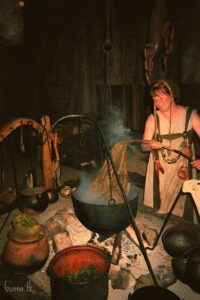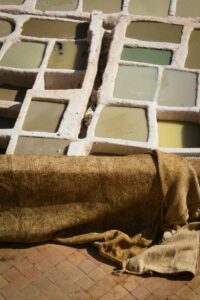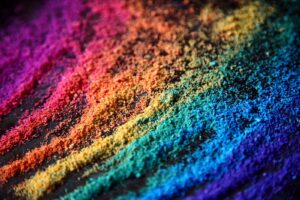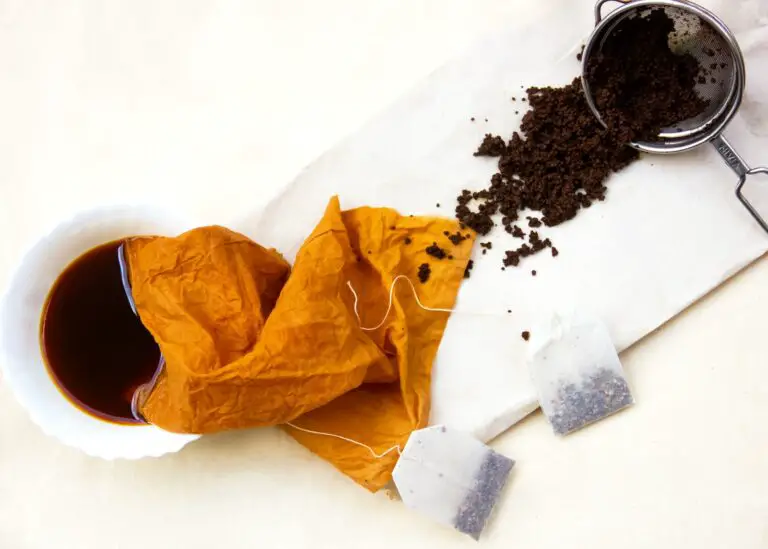The art of textile dyeing has transcended time, cultures, and geographical boundaries, evolving into a rich tapestry of techniques and materials. One such timeless technique that has endured through centuries is turmeric’s use in traditional textiles and dyeing. With its vibrant yellow hue and inherent properties, turmeric has played a significant role in the realm of natural dyes, offering a sustainable alternative to synthetic dyes and hazardous chemical processes.
Turmeric’s Use in Traditional Textiles and Dyeing
Natural Dyes: A Glimpse into Tradition
Natural dyeing, an ancient art dating back to prehistoric times, involves extracting pigments from plant sources to color fabrics. Among these natural dyestuffs, turmeric has emerged as a prominent player, lending its warm, golden tones to textiles. In the realm of eco-friendly natural dyes, turmeric’s use in traditional textiles and dyeing has stood the test of time, reflecting its potential as a versatile and sustainable coloring agent.

The Dyeing Process
The process of using turmeric as a natural dye involves creating a dye bath using turmeric powder, which is derived from the rhizomes of the Curcuma longa plant. This powder is added to a dye pot filled with water, creating a turmeric dye bath. Fabrics, often cotton, are immersed into the dye bath, and the dyeing process begins. The choice of textile substrate greatly influences the final color outcome, with natural fibers like cotton fabric absorbing turmeric dye effectively.
Dyeing Techniques and Experimentation
Artisans have perfected the art of turmeric dyeing fabric, utilizing various techniques to achieve desired results. Rubber bands are tied around fabric to create patterns, and the fabric is then immersed into the turmeric dye bath. The fabric absorbs the dye, with colors ranging from soft shades to more intense hues. In some instances, textile materials are exposed to direct sunlight to enhance color fastness.
Color Fastness and Sustainability
One remarkable characteristic of turmeric dyed fabric is its color fastness. When properly prepared and applied, turmeric dye exhibits good resistance to fading, making it a reliable choice for textile coloration. Its eco-friendly nature also contributes to its sustainability, as it eliminates the need for harmful chemical dyes that have adverse effects on both the environment and the human body.

Enhancing Turmeric Dyeing
To further enhance the dyeing process, natural dye experiments have been conducted. Substances like baking soda and lemon juice have been introduced to alter pH levels and influence color outcomes. Similarly, the addition of white vinegar, citric acid, or soda ash can modify the final color of the dyed fabric. These natural ingredients not only impact the shade but also contribute to the dye’s longevity.
Ancient Wisdom Meets Modern Sustainability
Turmeric’s use in traditional textiles and dyeing isn’t merely a vestige of the past; it’s an emblem of sustainable practices in the present. As the fashion industry seeks ethical alternatives to mass-produced garments, the demand for natural dyeing techniques gains momentum. Turmeric dyeing offers a solution that embodies cultural heritage, healing properties, and cost advantages, all while reducing the ecological footprint.

Challenges and Considerations
While turmeric dyes have remarkable color-fastness properties, they can be considered fugitive dyes, meaning they may fade over time due to factors such as exposure to light, washing, and wear. To counter this, proper aftercare techniques are recommended, such as gentle washing in cold water and avoiding excessive rubbing during laundering.
Exploring the Future
The resurgence of interest in natural dyes and traditional textile practices has breathed new life into turmeric’s role in the dyeing process. The antimicrobial properties inherent in turmeric have also piqued the interest of textile researchers, hinting at a potential future of fabric that offers health benefits beyond aesthetics. The journey of turmeric’s use in traditional textiles and dyeing continues, evolving as artists, designers, and scientists collaborate to push the boundaries of what this humble spice can achieve.
Turmeric’s Use in Traditional Textiles and Dyeing – Final Thoughts
In a world where sustainability and eco-conscious choices are paramount, the use of turmeric in traditional textiles and dyeing emerges as a symbol of ancient wisdom harmonizing with modern sensibilities. Its brilliant yellow hues tell a story of artistry, resilience, and environmental responsibility. As we weave together the threads of tradition and innovation, turmeric’s enduring presence in the realm of natural dyes serves as a testament to its timeless beauty and transformative potential in the world of textiles.

